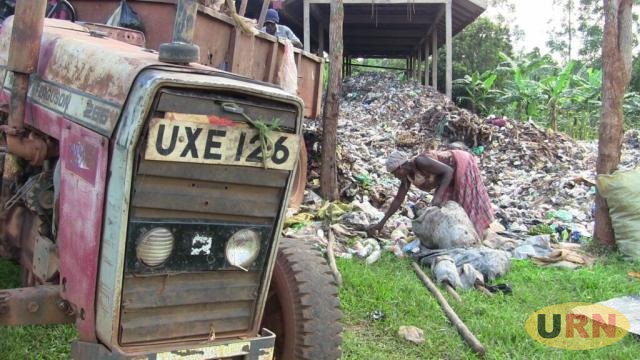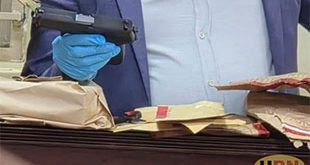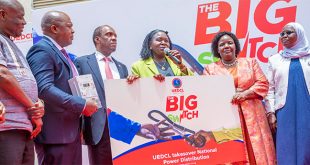
Mukono, Uganda | THE INDEPENDENT | Mukono Municipality is seeking 11 billion shillings for the construction of a modern solid waste management facility at Katikolo in a bid to enhance environmental sustainability and effective solid waste management.
The search for funding comes after the municipality with funding from the Korea International Cooperation Agency (KOICA) and the Global Green Growth Institute (GGGI) completed a feasibility study and developed a detailed technical design for the project.
“The feasibility study is done; the designs are ready. Now, we just need the funds to finish this project. we to stop the business of just dumping garbage in landfills. this facility will help us turn garbage into use,” the Mukono Municipal Mayor, Erisa Mukasa Nkoyoyo said.
Nkoyoyo made the remarks as the Global Green Growth Institute handed over the final report of the project to the Ministry of Water and Environment, Ministry of Local Government, and Mukono Municipal Council.
The project was initially designed to address the waste management challenges in the rapidly expanding Greater Kampala Metropolitan Area. However, the funders opted for Mukono as the location, considering the availability of land (approximately 10 acres) at Katikolo, which was already serving partly as a decomposing facility.
According to the designs, the site at Katikolo will undergo an upgrade to establish a manual waste sorting facility capable of handling approximately 7 tonnes of garbage per hour and up to 60 tonnes in a single 8-hour shift.
Dr. Adolf Spritzer, the Country Director at Fichtner Water and Transportation, a consultancy firm contracted by GGGI, highlighted that the feasibility study and design phase evaluated three technology options: fully automatic, semi-automatic, and manual. The preferred solution selected from these options was the manual waste sorting facility.
“Manual is ideal for Mukono as it required low funding to set up, and it is not too sophisticated, making it easily operable even by semi-literate workers with limited guidance,” Dr. Spritzer.
He added that in the current design, they have envisioned one operational line. However, based on future demands, a second line can be installed to increase capacity, with each operating as a standalone sorting platform.
According to the study, the facility requires an annual operating cost of 399 million shillings, covering salaries and wages, electricity, diesel, and water, among other items.
Based on the tonnage worked on, the facility is expected to be producing recyclables, including plastics, paper, metal, and glass, among others, with a revenue potential of 468.5 million shillings, thus making a minimal profit of 69.5 million shillings.
However, the facility will not be handling organic waste, as this will continue to be handled in the composting facility located in the same area. In addition to the suggested revenue, the study also proposed that a minimal gate fee can be charged, especially when non-recyclable refuse above a certain threshold is being delivered.
“Once the planned project is operation, the delivered waste volumes and composition are likely to change, gate fee is a potential revenue stream bur approach and cost must be carefully designed to avoid illegally dumping,” the feasibility study reads in part.
It is also estimated that 30 percent of the waste at the facility will require onward transport to the landfill site. From the plans, the facility, if set up, will require four administrative staff, one driver, two heavy machine operators, and a team of ten unskilled workers, of which eight will be actively involved in the sorting of waste.
The development of solid waste handling facilities has been a long-standing aspiration for many towns in Uganda. However, the realization of this goal remains elusive for most, with Mukono now seemingly seeing a glimmer of hope at the end of the tunnel.
Dagmar Zwebe, GGGI Country Director, assured Mukono of support in their quest for funds. She emphasized that the plan would be integrated into the government’s agenda to be included in the Ministry of Finance’s budget. Additionally, she said, efforts would be made to lobby for funding from various sources, including the World Bank and other entities investing in similar projects.
Mukono Municipality and its immediate catchment produce over 200 tonnes of solid waste, consisting of vegetable matter, glass, clinical waste, paper waste, plastics (especially low-density polyethylene), worn-out tires, and wood shavings.
Despite having 78 gazetted waste collection points, 15 waste skips distributed around the town, bunkers, and garbage skips for temporary waste handling, there is currently no sorting of waste. Consequently, all generated solid waste, including biodegradable and non-biodegradable, toxic and non-toxic, glass, and metals, ends up in the garbage skips and, eventually, at the disposal grounds.
Commenting on the designs presented, Mujjabi Mukasa, Senior Environment and Sanitation Officer at the Ministry of Water and Environment suggested considering the potential automation of the Mukono facility, as it might face challenges in handling the delivered waste efficiently in the short run.
Alexandria Nanyonga, Assistant Commissioner Urban Administration Ministry of Local Government, expressed gratitude to GGCI and KIOCA for funding the critical phase of developing the design and feasibility study. Nanyonga highlighted that waste management remains a significant challenge in the country.
She further wondered if other urban areas could mobilize resources to replicate or adopt the waste management project designed for Mukono.
******
URN
 The Independent Uganda: You get the Truth we Pay the Price
The Independent Uganda: You get the Truth we Pay the Price



